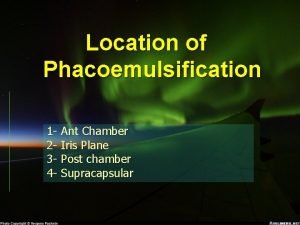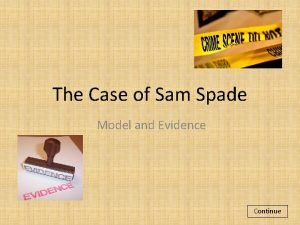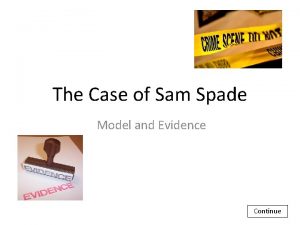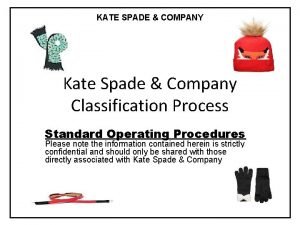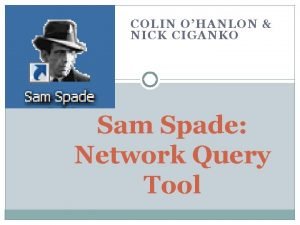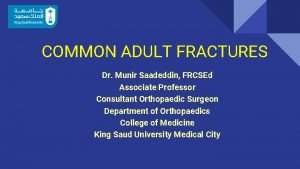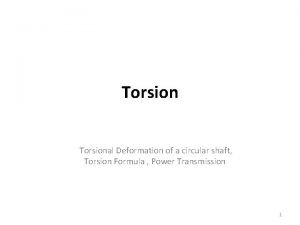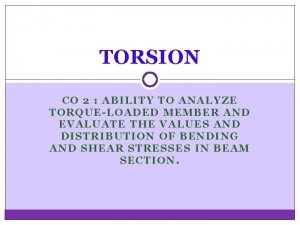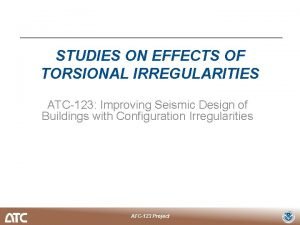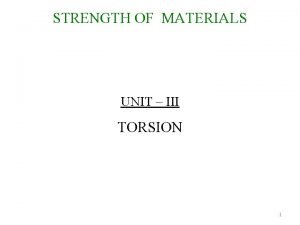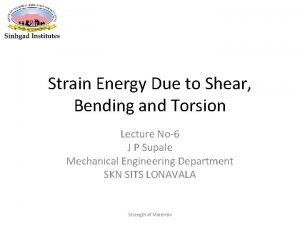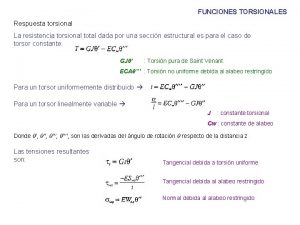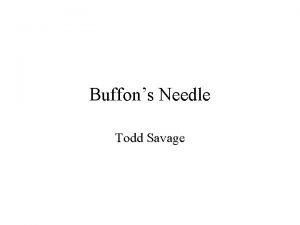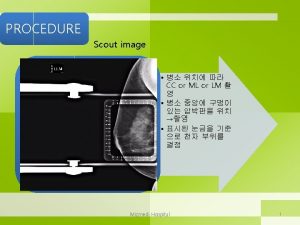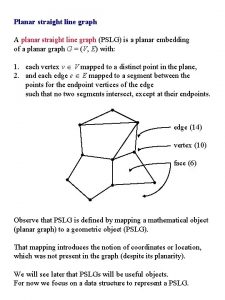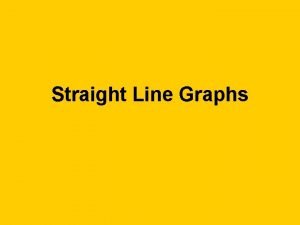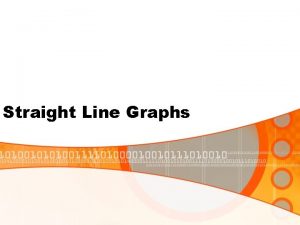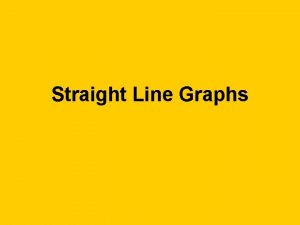Torsional Phaco with a straight needle and Spade












- Slides: 12

Torsional Phaco with a straight needle and “Spade” tip A bench test and clinical examination comparing it with the standard bent “Kelman” needle… 1. The Problem 6. Thermal Efficiency with load 2. The Bench Test Protocol 7. Thermal Efficiency unloaded 3. Cutting Efficiency Results 8. Clinical Evaluation Protocol 4. Video: Cutting the test material in the test chamber Kelman & Spade tip 9. The Cases 5. Fluidics Efficiency Results 10. Clinical Results 11. Conclusions Nigel Morlet FRANZCO FRACS Antony Clark MB BS (Hons) The authors have no financial interests. The study was self funded and the intellectual property rests with the principle author.

The Problem The surgical aim is to maximise: emulsification efficiency (less energy) delivery of fragments to the tip (fluidics) • The Kelman tip was designed for use via a scleral wound and is uncomfortable to use and visualize as the tip has too much angle down. • “Constipation” with hard fragments stops flow, which often results in delivery of 4 to 5 times more energy into the eye. “ 70 percent of the world’s surgeons prefer the straight tip, and the Kelman tip with the opening opposite the curve is awkward for some of us. ” Dr Osher at the XXV Congress of the ESCRS. Euro. Times, Vol 13, Issue 5, May 2008.

The Bench Test Setup and Protocol • • • A specially designed test chamber was designed to enable composite wax samples to be gently applied (0. 045 N) to end of the phaco probe needle tip. Wax samples were prepared as a 6 x 6 mm cylinder, weighed before mount to be cutthrough four times by the needle before reweighing to determine the cut weight. The machine parameters were kept constant for all cuts and the foot pedal was at full excursion for the entire duration of the cut. Torsional power was 100%, vacuum was limited to 250 mm. Hg, aspiration rate was set to 35 m. L/min, infusion height was at 110 cm. The 4 cuts were replicated 7 times for both the Kelman 45°needle and Spade tip prototype. The ultrasound time and percent power from the machine was noted for the cuts, and multiplied to produce the “effective” ultrasound time. The vacuum, aspiration and motion of the material over the tip and needle were measured independently from the machine and logged continuously throughout the cut. The total time for the cut, and the time to peak vacuum were determined from the data-log and used to derive the parameters shown in the results. Averages and 95% confidence intervals were determined for each of the parameters.

Cutting Material in the Test Chamber

Cutting Efficiency Results Kelman Spade Avg. 95%CI Avg. 95% CI P<0. 05 7. 0 2. 27 13. 29 3. 98 * effective US time (secs) 27. 88 7. 66 12. 68 2. 8 * mg cut per effective US sec 0. 33 0. 22 1. 25 0. 62 * mm length of cut per sec 1. 00 0. 32 2. 07 0. 52 * mg weight of cut The Spade tip needle required half as much torsional ultrasound power to cut twice as much material than the Kelman tip. The tip configuration made a considerable difference in the application of torsional ultrasound energy to the test material. The rate of cut was twice as fast as a result of this significant cutting efficiency.

Fluidics Efficiency Results Kelman Spade Avg. 95%CI Avg. 95% CI time to peak vacuum 1. 74 0. 21 1. 86 0. 22 weight (mg) cut up to peak vacuum 0. 46 0. 22 1. 54 0. 67 length (mm) cut up to peak vacuum 0. 95 0. 39 1. 79 0. 83 % total cut time with peak vacuum 75. 5% 5. 7% 55. 7% 9. 4% m. L aspirated up to peak vacuum 0. 45 0. 14 0. 38 0. 16 m. L aspirated per sec US time 0. 12 0. 05 0. 16 0. 06 mg cut per m. L aspirate 1. 38 0. 58 5. 55 2. 93 P<0. 05 * * * Although both needles reach peak vacuum at the same time and aspirate at the same rate, the Spade tip utilizes flow and, in particular, vacuum more efficiently. Once at peak vacuum, the Spade tip cut rate accelerates, so the amount cut per m. L of flow is significantly increased. This enables the Spade tip needle to complete the cut in half the time of the Kelman needle.

Thermal Efficiency Results 1. Temperature increase in the loaded needle Needle shaft temperature change during the test cuts (ie the needle tip was under load) at the time of cutting and fluidics efficiency testing (7 repetitions of 4 cuts for each needle) – 6 mm cut over 4 to 7 seconds. Kelman increase in shaft temp (°C) Spade Avg. 95% CI P<0. 05 1. 84 0. 71 0. 02 * The temperature of shaft of the Kelman needle increased significantly where as there was no temperature change seen in the Spade tip needle. This reflects the cutting in-efficiency of the Kelman needle.

Thermal Efficiency Results 1. 2. Temperature increase in the unloaded needle In a separate configuration of the test chamber, thermocouples measured the base of the needle shaft and just behind the tip (at the beginning of the flare or angle of the bend) with the infusion sleave in place. 100% torsional power was applied for one minute and the peak temperature recorded. Tests were performed with a high, a low flow, and chamber full of dispersive viscoelastic (Occuvisc) with a low flow, each time with an un-loaded needle tip. Sleeved needle Temperatures °C Base of needle Tip of needle Spade Kelman difference High flow (12 m. L/min) 20. 8 25. 9 -20. 0% 22. 8 22. 1 3. 2% Low flow (12 m. L/min) 24. 0 25. 9 -7. 3% 22. 8 25. 3 -9. 9% Viscoelastic & low flow 38. 0 41. 0 -7. 3% 40. 0 40. 5 -1. 2% The sleeve substantially cools the Spade tip needle base, suggesting that the Kelman needle temp is not only affected by the hand-piece peizo-electric crystals generating heat, but also by the needle motion itself. Again this reflects the in-efficiency of the Kelman needle action.

A Prospective Surgical Audit • We Compared – Three Spade tip prototypes with the standard Kelman 30°tip • Using the Outcome (measured by the phaco machine) – Cumulative Dissipated Energy (CDE) • Multivariate Analysis was used to account for – Age – Cataract density – Two surgical techniques (in the bag vs flip) • A standard machine setting was used for all cases – Only Torsional Amplitude set to 80% max. – Burst mode 45 ms on, 25 ms off – Irrigation 110 cm, Aspiration 40 cc/min, max. Vac. 300 mm. Hg

The Cases • One surgeon • 129 patients • Average 72. 5 yrs (range: 34 to 100) Technique (No. ) Avg. CDE Flip (85) 3. 23 In the bag (44) 3. 06 Non-significant difference Grade Cases Avg. CDE 1 3 0. 97 1. 5 1 1. 39 2 28 2. 29 2. 5 30 2. 50 3 63 4. 30 Age is also an important factor in the degree of lens hardness. 3. 5 3 7. 98 Heyworth, P et al Eye 1993: 7(pt 6); 726 -36 4 2 9. 12 Tabanden, H et al Eye 1994: 8(pt 1); 125 -9 Clinical grading of nucleus sclerosis was a good predictor of the amount of energy required to emulsify the cataract. Spearman’s rank correlation coefficient 0. 53, P<0. 0001

The Clinical Evaluation Results • The average CDE for each tip was adjusted for the grade of cataract, age of patient, and technique of extraction. Tip (cases) Kelman (14) Avg. CDE 4. 64 Adj. CDE* 5. 66 P-value <0. 0001 Tip 3 ( 40)** 3. 27 4. 49 0. 022 Tip 2 (31) 2. 83 3. 82 0. 803 Tip 1 (44) 2. 91 3. 73 The Spade tips were up to 34% more efficient. *The CDE was adjusted using multivariate analysis. ** Tips 1 & 2 were equivalent and better than Tip 3, all used less energy than the Kelman bent needle. The modified “spade” tips on a straight needle were significantly better than the Kelman bent needle

Conclusions • Torsional ultrasound can be effectively achieved with a straight needle and a Spade tip. • The Spade tip design is significantly more efficient at cutting test material and cataracts than the Kelman needle. Less phaco energy is put into the eye. • The fluidic efficiencies found in the bench testing were apparent in the clinical trials. Cutting is much less dependant on vacuum, producing less surge, and better emulsification with uninterrupted flow. • As less heat is generated at the base of the needle shaft by the Spade tip, it is likely to be safer to use, particularly with denser cataracts.
